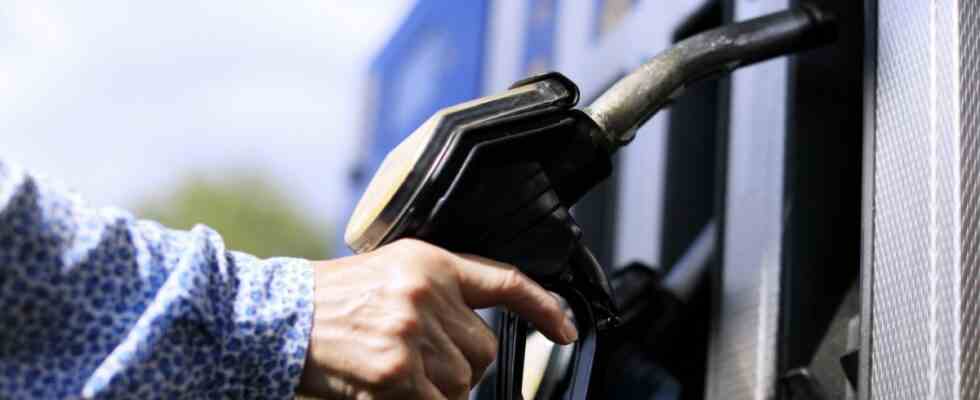Most people have a clear idea of what a navigation device should do. You want to get to your destination as quickly as possible. If you are traveling by car and are guided by Google Maps, you will soon have another option. In the future, users will not only be able to save time, but also fuel. Over the coming weeks, Google will introduce the “fuel-efficient routes” option for its Maps mapping service.
An example shows what that means in concrete terms: For the route from Ludwigsfelde in the south of Berlin to Marzahn in the north-east, Google has so far navigated in an arc over the A10. In the future, a small, green leaf will mark the more environmentally friendly option. It takes six minutes longer, is about 30 kilometers less on the road – and saves about a third of the fuel.
Drive six minutes longer, but save up to 35 percent fuel – the new function of Google Maps wants to make this possible.
(Photo: Google)
“In addition to the length of the route, we include other factors such as the gradient of the road and traffic jams in the calculation,” says the product manager responsible, Timo Rang. The quickest route may be over a hilly route, which increases fuel consumption. Lots of traffic lights not only waste time, the constant braking and starting also consumes a lot of energy.
Route planning also for electric cars
Google calculates the savings potential in real time and depending on the traffic situation. 35 percent less fuel, as in the example from Berlin, is rather the exception. In many cases, the fastest route is the one that uses the least fuel anyway. A compromise between travel time and fuel consumption is sought. “If a route only saves a little fuel but takes significantly longer, then Google Maps will suggest the faster route by default,” says Rang. If you don’t care about protecting the environment and your own wallet, but want to get there as quickly as possible, you can completely deactivate the function in the settings.
At least according to Google’s own data, the interest should be great. In the first half of the current year, more than three times as many people searched for “save gas” and “save fuel” than in the same period last year. Fuel prices are contributing to this, but perhaps also increased environmental awareness. In cooperation with Statista, Google had 1000 people living in Germany surveyed. 90 percent say that sustainability is important to them in everyday life. More than a third of those surveyed who want to buy a new car are considering an electric or hybrid vehicle.
Google Maps will also offer a suitable option for this in the future. Users can specify the engine type of their own car and choose between petrol, diesel, hybrid and electric drive. “This allows us to optimize the routing and forecast the percentage savings more precisely,” says Rang. However, charging stations are not included in the calculation. For a longer route with an e-car, you still have to plan the intermediate stops manually. After all, Maps shows where charging stations are located and whether they are currently occupied.
Enormous CO₂ savings possible
Google’s idea is not entirely new. Many classic navigation systems have been offering environmentally friendly guidance for years. Depending on the manufacturer, this sometimes works better, sometimes worse. For Maps, the fuel-saving routes have been available in the USA since last October, and Google introduced them in Canada in April. According to the group, this saved around half a million tons of CO₂. That corresponds to the emissions of 100,000 cars.
Jeff Gonder of the US Department of Energy’s National Renewable Energy Laboratory says the feature has “enormous potential” to save carbon and money at the same time. “It’s good for both people and the planet.” Google estimates that one million tons of CO₂ could be emitted less each year. If you really want something good for the environment, you have even better options. They are called bicycle, public transport and Deutsche Bahn.

